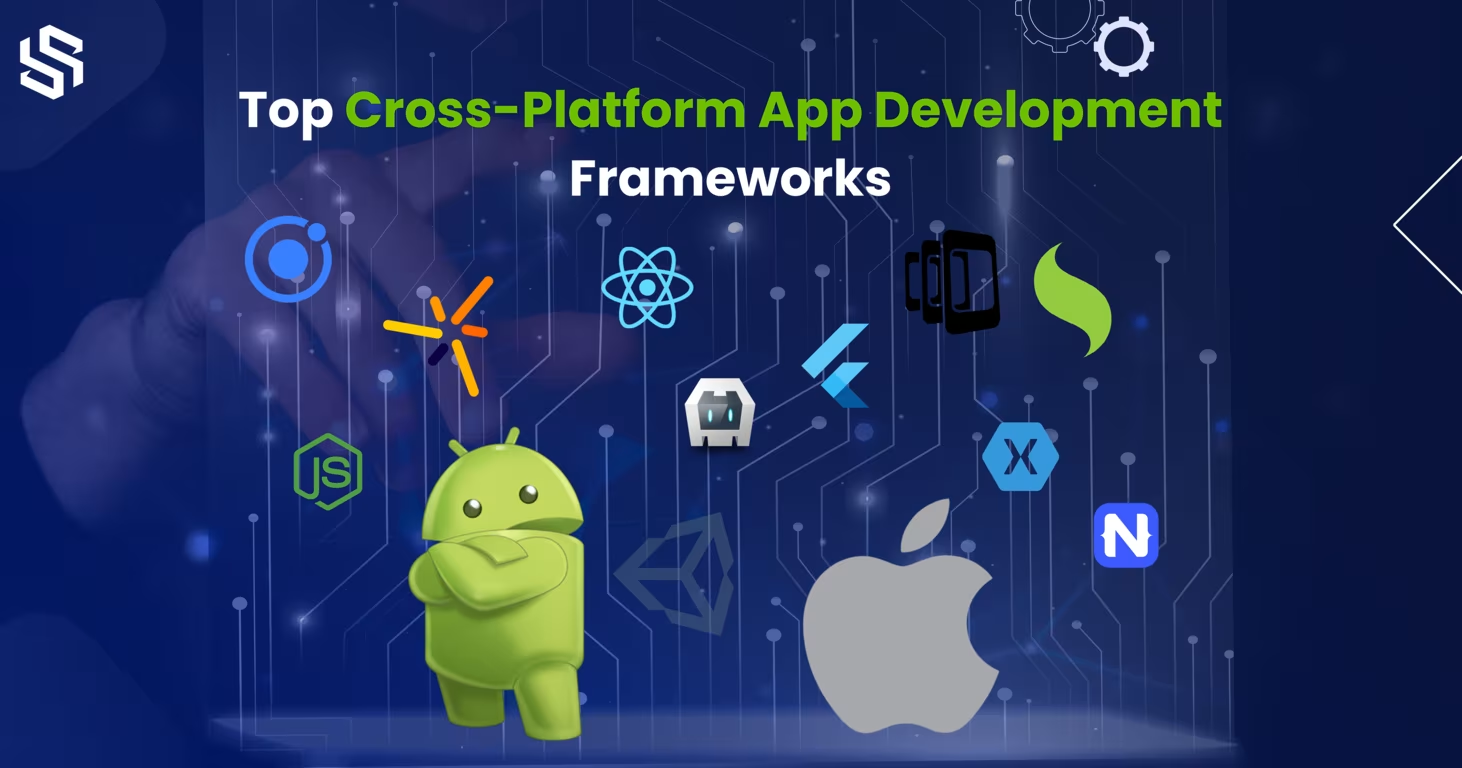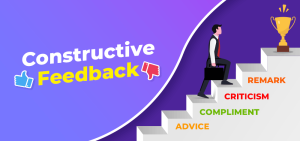Explore how Cross-Platform App Development Frameworks empower businesses to build scalable, high-performance apps with one codebase. Discover the future of unified app development — faster launches, lower costs, and seamless user experiences across all devices.

-
Introduction — The Age of Seamless Digital Experiences
-
The Evolution — From Fragmentation to Fusion
-
The New Titans of the Development World
-
Performance Reimagined — Native Feel, Shared DNA
-
The Economics of Agility — Build Once, Scale Everywhere
-
The ROI of Consistency — Beyond the Code
-
The Developer Experience — Empowering Builders of Tomorrow
-
The Cloud Connection — Cross-Platform Meets Continuous Delivery
-
Design Systems — The Art of Visual Harmony
-
The Balancing Act — Challenges and Engineering Excellence
-
The Future — AI, AR, and Unified Development
-
Real-World Case Studies
-
The Strategic Imperative — Software Without Borders
-
Conclusion — The Infinite Code Frontier
One Code, Infinite Possibilities: Unlocking the Strategic Power of Cross-Platform App Development Frameworks in 2025
Introduction — The Age of Seamless Digital Experiences
In a world where users move fluidly across screens, cross-platform app development frameworks are redefining how digital experiences are built. Businesses no longer need to choose between ecosystems — they can now deliver unified, high-performance apps from a single codebase.
Today’s reality is clear: write once, refine everywhere.
In a digital world that never sleeps, users expect experiences that follow them seamlessly — from the phone in their hand to the desktop at work, and even the screen on their wrist. Yet, behind every polished interface lies a daunting question that has long haunted developers and business leaders alike: How can we build for everyone, everywhere, without multiplying effort, time, and cost?
The answer lies in one of the most transformative ideas in modern software engineering — cross-platform app development frameworks. These frameworks have evolved from mere efficiency tools into strategic innovation engines that empower companies to create, scale, and unify experiences across devices and ecosystems.
Today, the mantra is clear: write once, refine everywhere.
1. The Evolution — From Fragmentation to Fusion
A decade ago, developing an app meant choosing a side. You either built for iOS or Android, each with its own ecosystem, tools, and programming languages. The result was fragmentation — separate teams, doubled costs, and a constant battle to synchronize updates and user experiences.
Enter cross-platform development frameworks — the architects of digital fusion. What began as an attempt to reuse logic between platforms has matured into a sophisticated movement powered by native rendering, shared architecture, and performance parity.
Early players like PhoneGap and Ionic opened the door, but frameworks like React Native, Flutter, Kotlin Multiplatform, and .NET MAUI have redefined what’s possible. These tools no longer mimic native behavior — they deliver it, blending the speed of shared code with the artistry of platform-specific finesse.
2. The New Titans of the Development World
Flutter: Google’s Masterstroke of Design and Speed
Built on the Dart language, Flutter allows developers to craft pixel-perfect UIs with a single codebase that feels and performs like a native app. Its custom rendering engine gives brands full control over design aesthetics — a dream come true for startups and design-driven enterprises alike.
Take the example of Revolut, a UK fintech leader using Flutter for high-performance, visually stunning interfaces. By streamlining development across iOS and Android, Revolut reduced time-to-market while preserving the design precision essential to its brand identity.
React Native: Meta’s Bridge Between Web and Mobile
React Native brings the power of React’s declarative syntax to mobile development. It allows developers to build applications using familiar JavaScript and React principles, while still accessing native APIs for top-tier performance.
American giants like Walmart and Bloomberg have leveraged React Native to unify their app experience, proving that shared code doesn’t mean compromise — it means strategic consistency.
Kotlin Multiplatform: JetBrains’ Precision Engineering
Kotlin Multiplatform (KMP) takes a slightly different route — allowing teams to share business logic while keeping UI native. This hybrid approach is gaining traction among enterprise software engineers who demand performance, control, and scalability in equal measure.
For companies managing complex systems — such as logistics or financial platforms — KMP enables shared intelligence without sacrificing the flexibility of platform-specific design.
.NET MAUI: Microsoft’s Enterprise Powerhouse
For global organizations invested in Microsoft ecosystems, .NET MAUI (Multi-platform App UI) represents a unified future. Developers can build apps for mobile, desktop, and beyond using a single codebase, fully integrated with Azure and Visual Studio.
From healthcare to manufacturing, .NET MAUI is redefining enterprise mobility with security, performance, and cross-device continuity.
3. Performance Reimagined — Native Feel, Shared DNA
There was a time when “cross-platform” was a synonym for “compromise.” Not anymore.
Today’s frameworks deliver true native performance through advanced rendering engines, direct API integration, and hardware acceleration. Flutter’s Skia engine, for example, paints every pixel with precision, while React Native’s bridge communicates directly with native modules for near-instant responsiveness.
These frameworks are not shortcuts — they’re engineering triumphs that bring speed and sophistication together.
Consider Monzo, another UK fintech disruptor, using Flutter to iterate faster while delivering buttery-smooth UI transitions. In the US, healthcare innovators like Clover Health have adopted React Native to ensure consistent experiences across multiple platforms — critical in patient-facing applications where reliability isn’t optional.
The outcome: unified experiences that feel tailor-made for every device, every user, every time.
4. The Economics of Agility — Build Once, Scale Everywhere
In an era where markets evolve overnight, agility isn’t a luxury — it’s survival. Cross-platform frameworks allow teams to develop once and deploy everywhere, accelerating product cycles while cutting redundant effort.
This efficiency directly translates to economic advantage:
- 40% faster time-to-market, due to unified codebases.
- 30–50% cost reduction, by eliminating parallel development teams.
- Unified updates, ensuring every user receives new features simultaneously.
For startups, this means faster scaling and quicker feedback loops. For enterprises, it’s a strategic realignment of resources — shifting talent from repetitive platform management to innovation, testing, and customer-centric design.
Even the government and public sectors are taking notice. The UK’s NHS App team has explored cross-platform strategies to ensure consistent healthcare accessibility across devices, while maintaining rigorous security standards.
5. The ROI of Consistency — Beyond the Code
Cross-platform frameworks don’t just streamline development; they amplify brand coherence.
In today’s experience-driven economy, consistency across devices builds trust. Whether a user interacts with your app on Android, iOS, or the web, the interface should feel intuitively identical, yet contextually adaptive.
A uniform experience doesn’t just look professional — it reinforces identity, usability, and reliability.
Tech leaders like Uber, Airbnb, and Shopify have recognized this truth, turning to shared frameworks to deliver global consistency at scale. Each interaction — every button, animation, or transition — reflects the company’s design language, powered by cross-platform architecture beneath the surface.
6. The Developer Experience — Empowering the Builders of Tomorrow

Technology is only as strong as the people who build it. Modern cross-platform frameworks place developers at the center — empowering them with tools that are fast, intuitive, and collaborative.
Features like hot reload in Flutter and React Native let developers instantly visualize changes, turning coding into a real-time creative process.
Unified debugging, extensive documentation, and community libraries minimize friction, allowing developers to focus on what truly matters — innovation.
Moreover, the rise of AI-assisted coding tools, such as GitHub Copilot and JetBrains AI Assistant, perfectly complements cross-platform workflows. These intelligent assistants analyze context, suggest optimizations, and generate boilerplate code, enabling developers to build smarter and faster than ever before.
Cross-platform development isn’t just a technical framework — it’s a cultural shift that celebrates efficiency, collaboration, and human creativity.
7. The Cloud Connection — Cross-Platform Meets Continuous Delivery
Cross-platform frameworks thrive when paired with cloud-native development pipelines. Integration with services like AWS Amplify, Firebase, and Azure DevOps allows teams to automate builds, testing, and deployments across environments.
The result? A continuous integration and delivery (CI/CD) model that’s scalable, resilient, and globally accessible.
With one codebase, teams can:
- Push updates simultaneously to multiple platforms.
- Leverage cloud storage, analytics, and real-time databases.
- Monitor performance and user engagement across devices through unified dashboards.
For global brands, this synergy between cross-platform development and cloud orchestration represents the ultimate agility — an ecosystem that adapts as fast as markets do.
8. Design Systems — The Art of Visual Harmony
Cross-platform development isn’t just about logic — it’s about experience design at scale.
Modern enterprises rely on design systems — unified libraries of components, styles, and behaviors — to ensure consistent branding and usability. Frameworks like Flutter and React Native now seamlessly integrate with design tools such as Figma, Adobe XD, and Sketch, allowing designers and developers to speak a shared visual language.
This integration ensures that every pixel reflects purpose, and every motion aligns with brand storytelling.
When a user opens an app built with a cohesive design system, they don’t just see functionality — they feel identity.
9. The Balancing Act — Challenges and Engineering Excellence
Despite the extraordinary benefits, cross-platform development isn’t without complexity.
Developers must navigate challenges like:
- Managing platform-specific optimizations.
- Dealing with dependency fragmentation.
- Ensuring bundle size efficiency and native module integration.
Yet, these are not barriers — they are engineering frontiers.
Through modular architecture, performance profiling, and automated testing, elite teams overcome these hurdles, achieving harmony between universality and precision.
The secret lies not in choosing the “perfect” framework but in designing the perfect architecture — one that balances flexibility with discipline, innovation with reliability.
10. The Future — AI, AR, and the Next Era of Unified Development

The story of cross-platform development is far from over; it’s entering its most visionary chapter yet.
Artificial Intelligence is poised to revolutionize app development entirely. Imagine frameworks that analyze business goals and automatically generate optimized code for each platform.
Imagine adaptive UIs that respond dynamically to user behavior, device capability, or even environmental context.
Emerging frameworks will merge AI, AR, and XR (Extended Reality) into one unified layer — an era where developers build experiences, not just apps.
In the next five years, we’ll witness the rise of neural design assistants, capable of generating UI components in real time, and cross-platform compilers that translate human intent into functional experiences across devices.
The line between platforms will dissolve completely — leaving behind not “mobile” or “desktop” apps, but holistic digital ecosystems.
11. Case Studies — Cross-Platform in the Real World
Revolut (UK): Accelerating Fintech with Flutter
By adopting Flutter, Revolut shortened its release cycles by nearly 40%, maintaining impeccable design fidelity while ensuring smooth performance across platforms.
Clover Health (US): Healthcare Simplified with React Native
React Native enabled Clover Health to deploy a unified, compliant app ecosystem that improved patient accessibility and reduced operational overhead.
Microsoft (Global): Enterprise Power through .NET MAUI
With .NET MAUI, Microsoft extended its app ecosystem seamlessly across Windows, macOS, Android, and iOS — a perfect illustration of scalability meeting enterprise rigor.
These success stories demonstrate one truth: cross-platform development isn’t a shortcut; it’s a strategic advantage.
12. The Strategic Imperative — Software Without Borders
For modern enterprises, software is not a product — it’s infrastructure.
And in this infrastructure, cross-platform frameworks play a role as fundamental as electricity or the internet once did.
They enable global teams to innovate together, unify customer journeys, and sustain consistent digital growth. Whether you’re a startup chasing your first million users or a Fortune 500 company managing multi-device ecosystems, cross-platform development is the blueprint for digital scalability.
It’s no longer just about saving time — it’s about engineering digital coherence in a fragmented world.
Conclusion — The Infinite Code Frontier
As technology races forward, one principle remains timeless: the best software adapts to its users, not the other way around.
Cross-platform frameworks embody this philosophy. They allow businesses to meet their audiences wherever they are — seamlessly, elegantly, and efficiently.
The future belongs to those who see beyond platforms and focus instead on possibility. One codebase, infinite reach. One design language, infinite resonance.
This is not just the next step in app development — it’s the dawn of a borderless digital era, where innovation knows no device, and creativity knows no bounds.
One code. Infinite possibilities. The strategic power of cross-platform app development is shaping the digital future — today.


